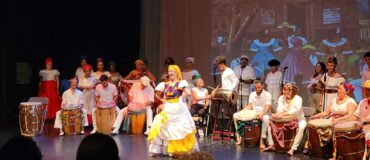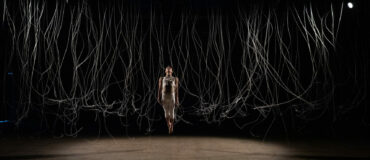By Lacy Molina-Lyon
Lacy Molina-Lyon is a 2024 Archiving and Preservation Fellow with Cashion Cutural Legacy. Read more about the Fellowships here. This is the third part of Lacy’s blog. Read the second part here.
Dancing with the Digital Archive
As I organized Cashion Cultural Legacy’s artistic digital archive, I faced some limitations that I mitigated through “good practices.” I define good practices as the processes and procedures that are adapted and suitable for a specific organization, whereas “best practices” are set forth by professional archival practitioners or organizations and are prescribed to be most effective. Preserving the essence of dance—a dynamic, fleeting art form—presents unique challenges. Unlike text or static images, dance is an expressive, time-based medium, where the nuances of movement and emotion are safekept and stored in digital formats. However, as I organized digital folders and subfolders, I felt the vibrant nature of the dances were quieted by the procedures of digital archiving.

2022 Ritos y Costumbres – Michoacan. Photo by Jamie Nieblas
I raised this concern to my mentor, Angel Diaz, and she reassured me that digital archives serve many purposes and these purposes can vary. After consulting with Angel about how to proceed, she had one suggestion – communicate with the organization. I met with Assistant Artistic Director, Alejandro (Alex) Ocampo. I raised my concerns with Alex and he quickly reminded me that the digital archive is for the organization’s staff only. This relieved my concern of dulling the vibrancy of dance. At this point, the digital archive shifted to an “in-house” archive. Accessibility would be limited to Cashion’s staff only.
This brought up the goal of eventually incorporating a public facing interface to showcase the organization’s artistic creations. This future endeavor would require additional considerations which are beyond the scope of this Fellowship. This experience taught me that describing a dance performance involves more than just cataloging the steps or the music. It requires capturing the intent, style, and cultural context, which can be highly subjective. Different archivists might interpret the same performance in various ways, leading to inconsistencies that can hinder the accessibility and understanding of the archived material. To mitigate this, I incorporated controlled vocabulary and a manual for others to follow.
Archiving dance is a dance itself—an intricate choreography of technology, interpretation, and ethics. While these roadblocks are challenging, they also highlight the importance of creative problem-solving and collaboration in our work as digital archivists. The goal is not just to preserve dance but to ensure that future generations can experience and understand its full richness. As I finalized the digital archive, I made sure that the nature of it was true to the organization and adaptable to their changing needs. Although some “best practices” were incorporated in this project, more “good practices” were instilled. This balancing act is an ongoing symbolic dance within the digital archive.
Header image: “1976 Mextizol – Prehispanic.” Unknown photographer. Mextizol was the creation of Los Lupeños co-founders Susan Cashion and Ramón Morones. This “choreodrama” which told the story of the mestizo culture debuted in the mid-1970s and toured in a number of iterations in the southwestern states.
All photos courtesy of Cashion Cultural legacy.

Image description: A woman with dark long hair crossing her arms, leaning against a wall, and smiling slightly.
Lacy Molina-Lyon is a doctoral student and research assistant at the College of Information at the University of North Texas. Her research examines information organization in archival records and ethical metadata. Lacy holds a bachelor’s degree in political science and a master’s degree in history. Her love for research, archives, history, and libraries motivated her to pursue a doctorate. Under the direction of Dr. Oksana Zavalina, Lacy is working on her dissertation which seeks to understand applied ethical themes within community oral histories records. As a first-generation college student, Lacy is determined to show other Latinas that it is possible for them to earn advanced graduate degrees. Lacy is also a certified 7th-12th grade English, Language Arts, and Reading teacher and School Librarian in the state of Texas. She is a proud supporter of galleries, libraries, archives, and museums.
Photo credit: Esther Mary Photography
____
We accept submissions on topics relevant to the field: advocacy, artistic issues, arts policy, community building, development, employment, engagement, touring, and other topics that deal with the business of dance. We cannot publish criticism, single-company season announcements, and single-company or single artist profiles. Additionally, we welcome feedback on articles. If you have a topic that you would like to see addressed or feedback, please contact communications@danceusa.org.
Disclaimer: Opinions expressed in guest posts do not necessarily represent the viewpoints of Dance/USA.



